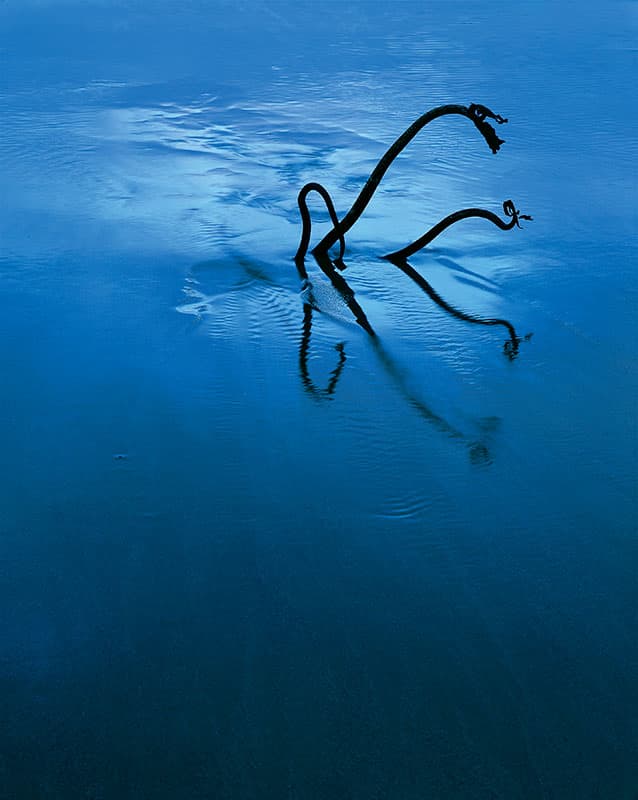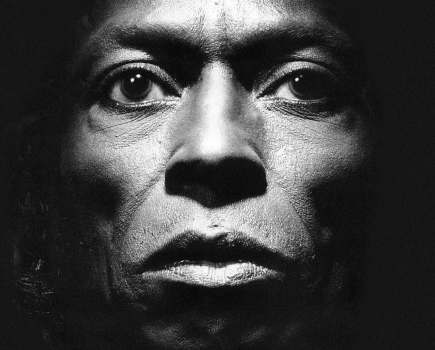Photo Insight with David Ward
 David Ward is one of the UK’s finest landscape photographers. With more than 20 years’ experience in large-format photography, he has photographed extensively throughout the UK and in countries such as Canada, Iceland, Norway and France. He has also led workshops for Light & Land. David has written two books on his photographic philosophy called Landscape Within and Landscape Beyond. Each month, he will discuss the story behind one of his fantastic landscape photographs
David Ward is one of the UK’s finest landscape photographers. With more than 20 years’ experience in large-format photography, he has photographed extensively throughout the UK and in countries such as Canada, Iceland, Norway and France. He has also led workshops for Light & Land. David has written two books on his photographic philosophy called Landscape Within and Landscape Beyond. Each month, he will discuss the story behind one of his fantastic landscape photographs
I discovered this shot while taking a walk along the beach in one of my favourite locations, Achnahaird, which is in the north-west Highlands of Scotland. Although it’s a location that I don’t often visit, it’s a place I am incredibly fond of. I was recently looking back through some of my favourite images that I’ve produced in the past ten years or so and I found that six or seven of them were actually produced on this beach. That’s a disproportionately large amount considering it’s a location I visit at most once a year.
Achnahaird has many things that I enjoy working with. For example, the damp sand, under the right lighting conditions, offers some great reflections. Because it’s in the Highlands, it also guarantees overcast conditions, which is something I’ll discuss later. I also like the fact that the area never looks the same. Once the tide comes in things are shifted around, so that each shot is, in its own way, unique. Around the beach there are some great rock formations and salt flats, and all of this is backed by some beautiful hills. It’s a quietly spectacular location.
This image was taken on a large expanse of sand on a particularly overcast day. I could see there was a patch of blue sky moving in my direction, and just ahead of me I could also see that the roots of a kelp plant had been caught in the sand after a big storm. They seemed to look like sea monsters breaking the surface. I wanted to photograph the roots and also capture the reflected light on the damp sand. Luckily, the light was moving in a very even way so I was fairly certain where I should set up in order to capture the scene. I set up my camera and waited around 20 minutes. Sure enough, the light positioned itself within the frame and reflected on the sand.
What appeals to me about this image is that it’s a shot you perhaps wouldn’t notice if you were strolling along the beach. There’s something ordinary about it. Because I have presented this scene within a frame I have isolated it and drawn attention to it. It’s a common theme within my work. I like to try to find beauty in the mundane and everyday. While this image is not an uncommon sight on a beach, the way it is shot makes all the difference.

I worked hard to figure out exactly where the best position would be to shoot. That was dictated largely by where the reflection was. For instance, the left-hand piece of kelp crosses over the one in the middle but in the reflection it’s completely separate from it. That was a very deliberate decision. I wanted to make that slight incongruity because the rest of it is very symmetrical. I wanted to add a bit of tension to the image by doing that.
This image could have been shot in direct light and have been obvious what it was. But, due to the way I’ve photographed the kelp roots, they become something mystical. They appear in silhouette and less obvious. The reflections on the wet sand add an extra level to it as well.
The light also serves to push your eye towards the subject through gradation – it’s darker at the bottom than it is at the top. It’s very natural for our eyes to move from the dark areas of a scene to the light, and that’s what I tried to exploit here. In this image you look at the edges and bottom of the frame first, and then your eyes travel towards the shapes nearer the top. This all happens in a fraction of a second, but it’s very important to note.
I would say that around 80% of my images are made under overcast conditions. I think the quality of the light is much nicer – it’s subtle. If you’re working with reflections, they will show up a lot better in that light. It guarantees that the colours are much more prominent because in direct light colours can tend to appear subdued.
The kelp roots are in that position within the frame simply because it felt right to put them there. I try not to think too much about things like that. It was placed there just because it felt balanced. If I look at it, I suppose the lines of reflection are probably a third of the way from the top, but I didn’t consider that. I judge subject placement on a case-by-case basis, depending on the objects I have to work with. I often find myself placing things centrally, but here it needed to be presented in a more dynamic way – just positioning the subject a little to the side has made all the difference.
David Ward was talking to Oliver Atwell
To see more of David’s images or to book a place on one of his workshops, visit www.into-the-light.com







